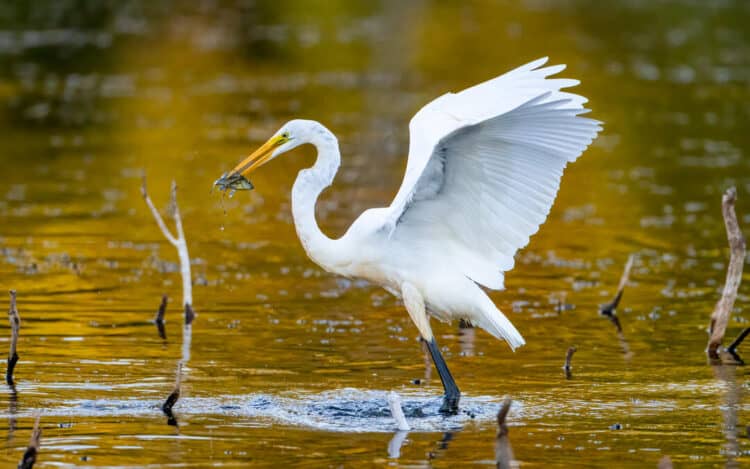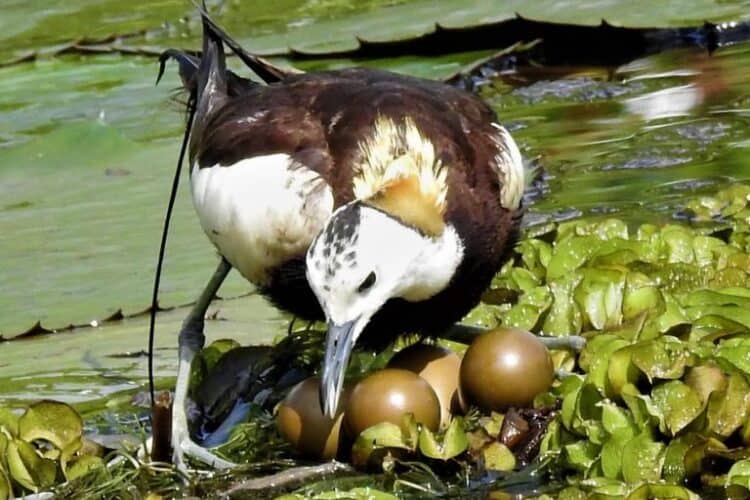Wetlands may not look as picturesque as flowery meadows or verdant rainforest, but that doesn’t mean they’re not important. As well as acting as carbon sinks and shock absorbers for extreme weather events, they are also essential rest and refuelling stops for thousands of waterbirds as they migrate along coasts and continents.
That’s why the Ramsar Convention on Wetlands of International Importance (especially as Waterfowl Habitat) aims to preserve waterbirds by helping to maintain networks of important bird habitat sites.
In working towards this aim, Wetlands International, in partnership with Governments, Universities and other conservation NGOs (including BirdLife International) has developed the Climate Resilient Flyway (CRF) project.
The CRF project assesses the vulnerability of critical waterbird habitats along the African-Eurasian Flyway to the impacts of climate change, and supports National and site-level demonstration projects at the Inner Niger Delta, Mali and at Lake Abijatta, Ethiopia.
Understanding the vulnerability of these ‘Critical Sites’ helps to ensure their preservation and resilience to climate change. To aid in this process, the CRF project has developed the Critical Sites Network Tool 2.0 (CSN), which uses Ramsar Criteria 2 and 6 to make predictions on the future health of wetlands for their qualifying waterbird species resulting from the impacts of climate change. “To make predictions, the CSN uses a range of waterbird species datasets, such as Important Bird and Biodiversity Areas as identified by BirdLife International, and the IUCN Red List, for which BirdLife is the global authority for birds” said Dr Ashton Berry, BirdLife’s Global Climate Change Programme Coordinator.
Funded by the International Climate Initiativeon the basis of a decision adopted by the German Bundestag, the CSN promotes climate change adaptation planning by making information available on predicted changes in freshwater flow and inundation, the distribution of waterbird populations and the suitability of wetlands to form critical sites.
The CSN tool is already proving its value by predicting that at least 30% of Ramsar Sites along the African-Eurasian flyway will be under threat by 2050. The situation is particularly alarming in Africa where almost 60% of the Ramsar Sites are likely to deteriorate, and only one site is likely to improve. Deterioration of these wetlands is linked to the significant range reductions of waterbird populations due to local and long-distance impacts of climate change. Many of the vulnerable sites are situated in arid and semi-arid regions where only small changes in rainfall can have a huge impact.
“We can reduce the impact of climate change on waterbirds by introducing more sustainable management practices, such as reducing the rate of water extraction, and by conserving a comprehensive and coherent network of wetlands across the flyway” said Mr Merijn van Leeuwen, Overall Project Manager of the CRF project. “In many cases, applying nature-based solutions that integrate the requirements of people and nature are the only viable option to maintain a functioning network of wetlands used by waterbirds along their flyway” he said.
Please contact Wetlands International ([email protected]) or BirdLife International ([email protected]) if you would like to discover more about these tools.
This article was first published by BirdLife International on 01 Feb 2019. Lead Image: Cranes at the Hula Lake in northern Israel. Cranes are the highlight of bird-watching tours. (photo credit: Nati Shohat/Flash90).







Leave a Reply